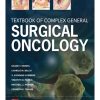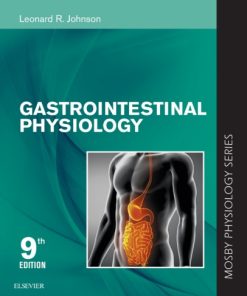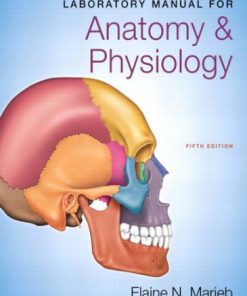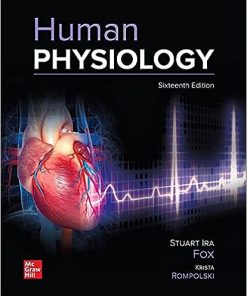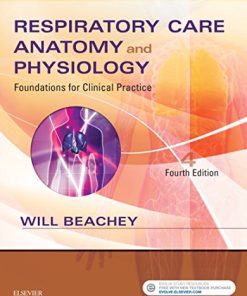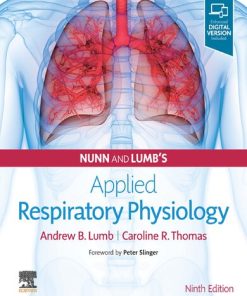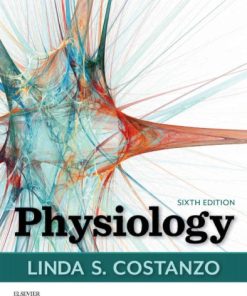(EBook PDF) Respiratory Physiology Mosby Physiology Series 2nd Edition by Michelle Cloutier 0323595804 9780323595803 full chapters
$50.00 Original price was: $50.00.$25.00Current price is: $25.00.
Respiratory Physiology (Mosby Physiology Series) 2nd Edition by Michelle M. Cloutier – Ebook PDF Instant Download/DeliveryISBN: 0323595804, 9780323595803
Full download Respiratory Physiology (Mosby Physiology Series) 2nd Edition after payment
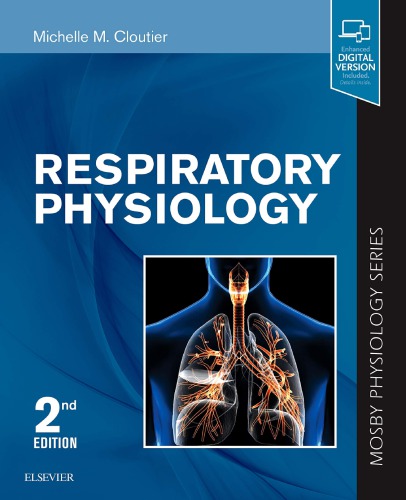
Product details:
ISBN-10 : 0323595804
ISBN-13 : 9780323595803
Author: Michelle M. Cloutier
Gain a foundational understanding of respiratory physiology and how the respiratory system functions in health and disease. Respiratory Physiology, a volume in the Mosby Physiology Series, explains the fundamentals of this complex subject in a clear and concise manner, while helping you bridge the gap between normal function and disease with pathophysiology content throughout the book.
Respiratory Physiology (Mosby Physiology Series) 2nd Table of contents:
1. Overview of the Respiratory System: Function and Structure
Basic Structure of The Respiratory System
Anatomic and Physiologic Correlates
Summary
Key Words and Concepts
2. Mechanical Properties of the Lung and Chest Wall
Static Lung Mechanics
Lung Volumes
Using and Interpreting Results of Lung Volume Measurements
Lung Compliance and Lung Elastic Properties
Compliance of the Chest Wall
Compliance of the Respiratory System
Factors Determining Lung Volume
Lung–Chest Wall Interactions
Pressure–Volume Relationships
Surface Tension
Surfactant
Alveolar Interdependence
Summary
Key Words and Concepts
3. Dynamic Lung Mechanics
How a Pressure Gradient is Generated
Resistance
Factors Contributing to Resistance
Lung Resistance
Lung Volume and Airway Resistance
Elastic Recoil and Airway Resistance
Neurohumoral Regulation of Airway Resistance
Dynamic Compliance
Dynamic Airway Compression and Flow Limitation
The Work of Breathing
Summary
Keywords and Concepts
4. Overview of the Respiratory System: Function and Structure
Lung Volume Measurement
Measurement of Lung Volumes
Spirometry
Determinants of Maximal Flow
Interpreting the Vital Capacity Maneuver
Approach to Interpreting Lung Volumes, Spirograms, and Flow Volume Curves
Peak Expiratory Flow Rate
Other Useful Tests of Lung Function
Uses of the Measurement of the Dlco
Airway Resistance and Lung Compliance
Measurement of Lung Compliance
Uses of Spirometry and Body Plethysmography
When Should Pulmonary Function Tests be Used?
Summary
Keywords and Concepts
5. Alveolar Ventilation
Composition of a Gas Mixture
Alveolar Gas Composition
Distribution of Ventilation
Tests of Distribution of Ventilation
Dead Space
Aging
Summary
Keywords and Concepts
6. The Pulmonary Circulation
Pulmonary Blood Flow
Bronchial Blood Flow
Pressures and Flows in the Pulmonary Circulation
Pulmonary Vascular Resistance
Gravity and Effects on Pulmonary Blood Flow
Effects of Pressure Changes on Extraalveolar and Alveolar Vessels
The Alveolar–Capillary Network
The Pulmonary Lymphatic System
Pulmonary Edema
Active Regulation of Blood Flow
Measurement of Pulmonary Vascular Pressures
Summary
Keywords and Concepts
7. Ventilation, Perfusion, and Their Relationships
Ventilation/Perfusion Ratio
Regional Differences in Ventilation and Perfusion
Alveolar–Arterial Difference
Arterial Blood Gas Abnormalities
Ventilation/Perfusion Ratio in a Single Alveolus
Anatomic Shunt
Physiologic Shunt
Ventilation–Perfusion Mismatching
Hypoventilation
Diffusion Abnormalities
Diseases Associated with Hypoxia
Mechanisms of Hypercarbia
Effect of 100% Oxygen on Arterial Blood Gas Abnormalities
Effect of Changing Cardiac Output
Effect of Ventilation–Perfusion Regional Differences
Summary
Keywords and Concepts
8. Oxygen and Carbon Dioxide Transport
Gas Diffusion
Perfusion Limitation
Diffusion Limitation
Diffusion Of O2 And CO2
Diffusion of CO2
Oxygen Transport
Hemoglobin Structure
Oxygen Binding to Hemoglobin
Dissolved Oxygen
Oxygen Saturation
Oxygen Content (Concentration) of Blood
The Oxyhemoglobin Dissociation Curve
Factors Associated with Shifts in the Oxyhemoglobin Dissociation Curve
Clinical Significance of Shifts in the Oxyhemoglobin Dissociation Curve
Oxygen Delivery to the Tissues
Oxygen Consumption
Tissue Hypoxia
Carbon Dioxide Transport
Carbon Dioxide Production, Metabolism, and Diffusion
Bicarbonate
Dissolved Carbon Dioxide
Carbamino Compounds
Carbon Dioxide Dissociation Curve
Summary
Keywords and Concepts
9. Pulmonary Aspects of Acid–Base Balance and Arterial Blood Gas Interpretation
Principles of Interpreting Arterial Blood Gas Values
Types of Acid–Base Abnormalities
Measuring Arterial Blood Gases
Respiratory Acidosis and Alkalosis
Metabolic Acidosis and Alkalosis
Respiratory and Renal Compensatory Mechanisms
Renal Compensation
Base Excess and Anion Gap
Arterial Oxygenation
Analyzing Arterial Blood Gas Values
Summary
Keywords and Concepts
10. Control of Respiration
Overview of Ventilatory Control
The Respiratory Control Center
Spinal Pathways
Central Chemoreceptors
Peripheral Chemoreceptors
Chest Wall and Lung Reflexes
Nonpulmonary Reflexes
Response to Carbon Dioxide
Response to Hypoxia
Abnormalities in Control of Breathing
Summary
Keywords and Concepts
11. Nonrespiratory Functions of the Lung
Aerosol Deposition in the Lung
Inhaled Toxicants, Air Pollution, and Disease
The Lung as a Secondary Lymphoid Organ
Humoral Immune Mechanisms
Normal Adaptive Immune Response and the Response to Bacteria
Altered Pulmonary Defense
Lung Diseases Associated with Abnormalities of Lung Defense
Diseases Associated with Abnormalities in Innate and Adaptive Immunity
Summary
Keywords and Concepts
12. The Lung Under Special Circumstances
Exercise
Lung Volume Changes with Exercise
Exercise Testing
Training Effects
Fetal Lung Development
Fetal Respiration Development
Postnatal Development
High Altitude and Acclimatization
People also search for Respiratory Physiology (Mosby Physiology Series) 2nd:
west respiratory physiology
west respiratory physiology pdf
ninja nerd respiratory physiology
john west respiratory physiology
nunn’s applied respiratory physiology
Tags:
Respiratory,Physiology,Mosby Physiology,Michelle Cloutier
You may also like…
Uncategorized
Laboratory Manual for Anatomy & Physiology (Anatomy and Physiology) 5th Edition, (Ebook PDF)
Medicine - Anatomy and physiology
Medicine - Anatomy and physiology
Essentials of Anatomy & Physiology, 2nd Edition Kenneth S. Saladin
Uncategorized
Medicine - Anatomy and physiology
Nunn and Lumb’s Applied Respiratory Physiology, 9th Edition Andrew B. Lumb
Medicine - Anatomy and physiology


